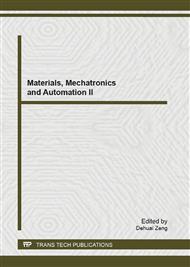p.9
p.14
p.27
p.39
p.45
p.51
p.56
p.62
p.68
Finding the Minimum of H Infinity Norm in Novel State Derivative Space Form
Abstract:
H-infinity norm is the maximum system gain and is related to the system output response. Finding the minimum of H-infinity norm is essential in control design to avoid overshoot or saturation in implementation. The fundamental of finding the minimum of H-infinity norm is based on optimal control. There are three problems that people usually have to face when they carry out optimal control designs in state space system form or descriptor system form. They are no state derivative considered in cost functional, no well-developed state derivative feedback control algorithms and some systems cannot easily design optimal control in these two system forms. To overcome the problems, a novel state derivative space system (SDS) form is introduced. In this novel form, novel differential Lagrange multiplier should be used to adjoin SDS system constraint to the cost functional that is function of state derivative only to straightforwardly carry out optimal control design. Based on the optimal control design in SDS form, the process of finding the minimum H-infinity norm in SDS form is successfully developed and verified in this paper. That process in SDS form is actually as straightforward as its counterpart in state space form. Consequently, wider ranges of problems can be solved without much of mathematics overhead.
Info:
Periodical:
Pages:
45-50
Citation:
Online since:
August 2013
Authors:
Price:
Сopyright:
© 2013 Trans Tech Publications Ltd. All Rights Reserved
Share:
Citation:


